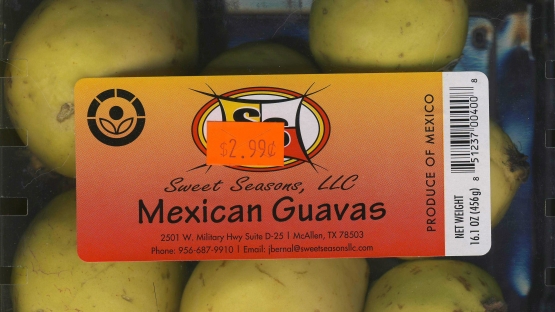What is the correct radiation dosage for disinfesting fresh products to eliminate the risk of carrying new invasive pests into importing countries? A new database developed by the IAEA, in collaboration with the Food and Agriculture Organization of the United Nations (FAO), will help regulators and the industry better answer that question.
Fresh produce such as fruits, vegetables and cut flowers must be disinfested of regulated pests before being shipped out of infested areas. The most commonly used phytosanitary treatments are cold, heat, chemical fumigants and, increasingly, ionizing irradiation. With increasing restrictions placed on the use of chemical fumigants, the use of commercial phytosanitary irradiation is steadily rising.
The new International Database on Commodity Tolerance (IDCT) screens and interprets technical information in the scientific literature about the quality of fruits and vegetables after they have received ionizing radiation as phytosanitary treatment. The data can be used to determine the maximum doses of radiation that different types of fresh commodities including fruits, vegetables and cut flowers can tolerate.
The database contains information on 89 fresh commodities and more are being added. “This information will help users optimize phytosanitary irradiation doses without having to go through hundreds of research papers on the topic,” said Guy Hallman, research entomologist at the Joint FAO/IAEA Division of Nuclear Techniques in Food and Agriculture, and one of the information architects of the database.
Compared to other commercial treatments, irradiation has several major advantages, according to Hallman. “Each of the traditional treatments works only for certain types of commodities. For example, methyl bromide fumigations are good for citrus fruits, grapes and cut flowers but are not tolerated by most tropical fruits,” he said. By contrast, more fresh fruits and vegetables tolerate radiation than any other commercial phytosanitary treatment. “Phytosanitary irradiation is an effective and safe method.”
Despite the recent growth in phytosanitary irradiation, which is now accepted by more than 60 importing countries, the total amount of fresh produce disinfested through irradiation remains rather small. In 2016, around 30 000 metric tons of fresh produce was irradiated worldwide, while 350 000 tons of mangoes were disinfested with a hot water treatment in Mexico alone. Barriers to the expansion of irradiation treatment include steep initial investment costs, strict government regulation and general perceptions of radiation technology, Hallman said. “Several countries do not accept fresh produce treated with irradiation at all,” said Hallman – even though the method leaves no residues in the produce undergoing treatment.
Collecting data
As irradiation makes up only a small, although growing share of phytosanitary measures used worldwide, getting precise and accurate information on the proper doses of radiation for different types of commodities is challenging. “More and more countries are starting to see its benefits and are considering adopting this method, and that is why our database can be very useful,” said Hallman.
The database is an extension of the International Database on Insect Disinfestation and Sterilization (IDIDAS), a database developed in 2004 that is a global compendium of information on the doses of radiation required by many different types of pest insects to guarantee reproductive sterility of adult insects when applying the sterile insect technique or of immature insect stages – eggs, larvae and pupae – when disinfecting commodities as part of phytosanitary irradiation.
In addition to creating and maintaining databases on pest control through irradiation, the IAEA and the FAO co-organize the Annual Chapman Phytosanitary Irradiation Forum at Chapman University in California. The objective of this forum is to increase the understanding and use of irradiation treatment to enhance global trade and prevent the international spread invasive pests. Experts from the Joint FAO/IAEA Division delivered a session on the two databases at the Seventh Annual Forum on 21-22 March 2017.




